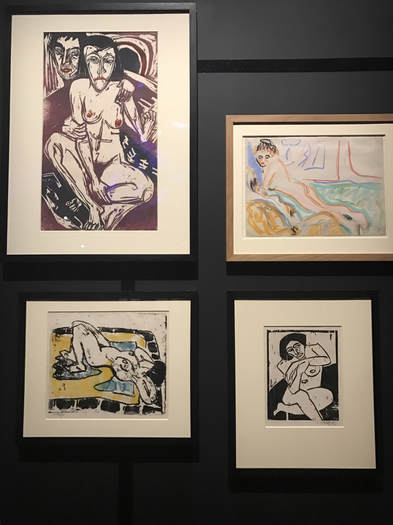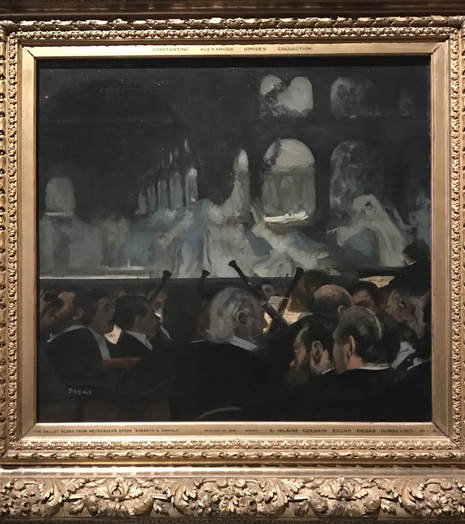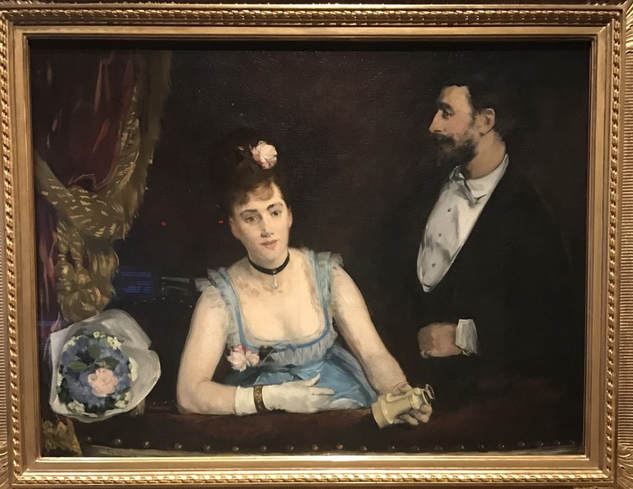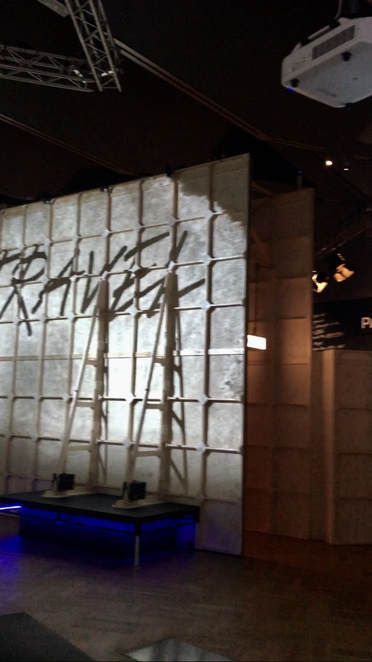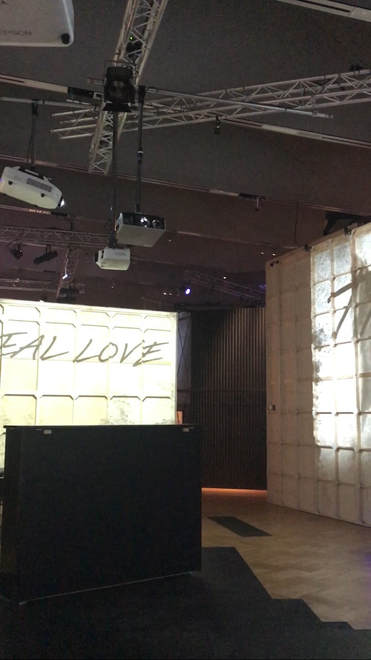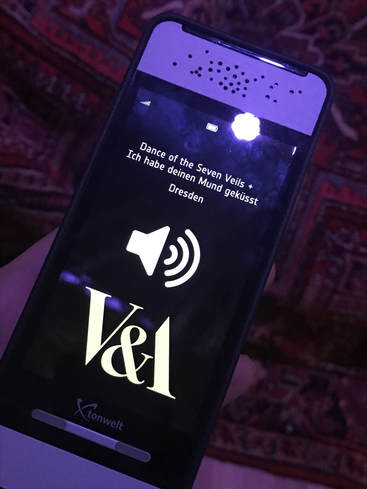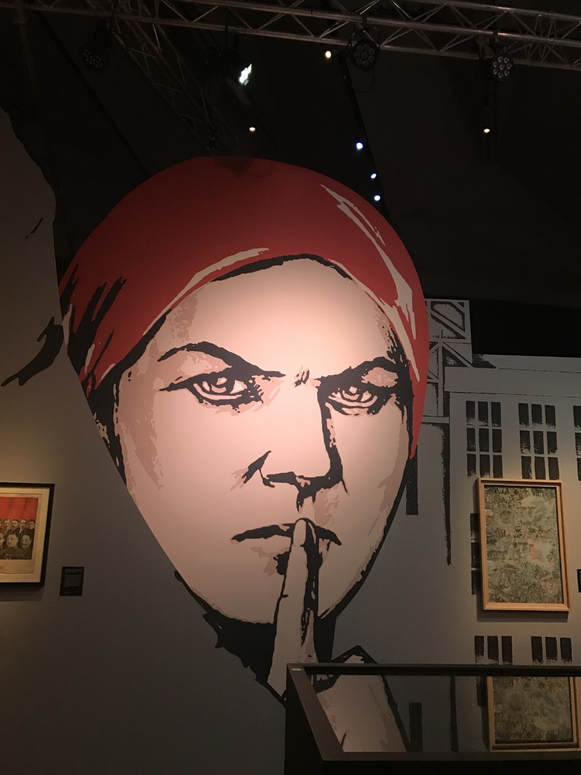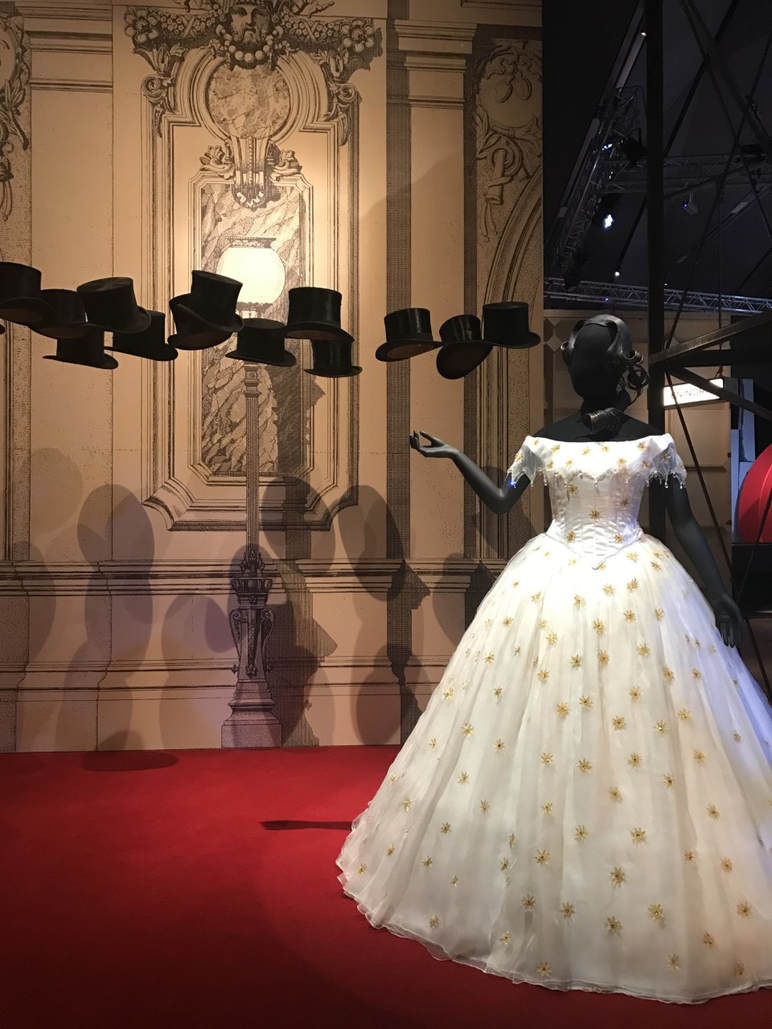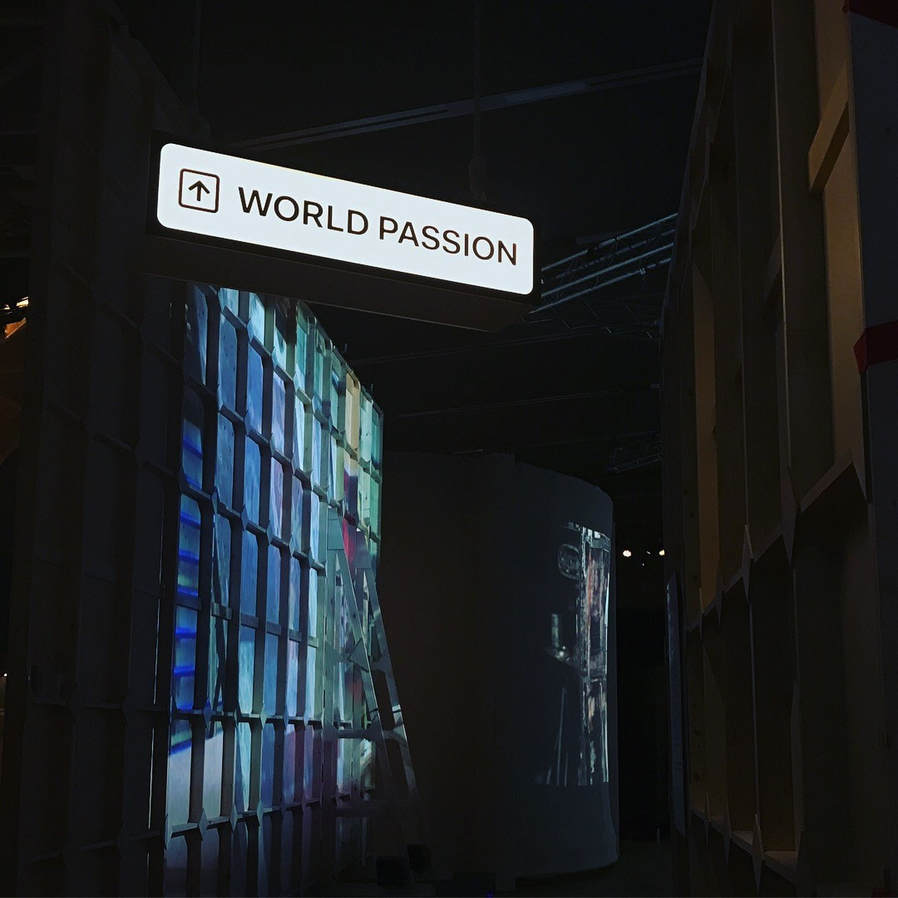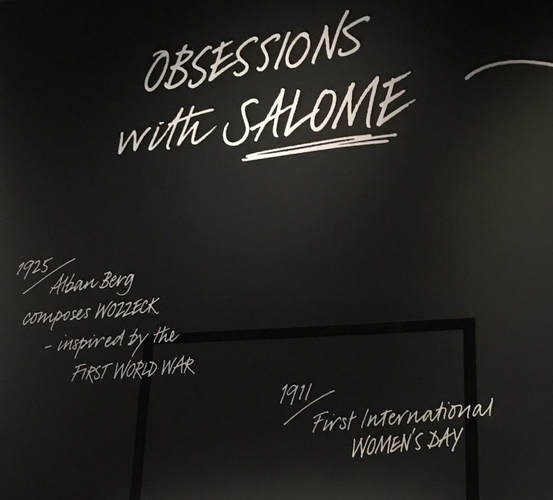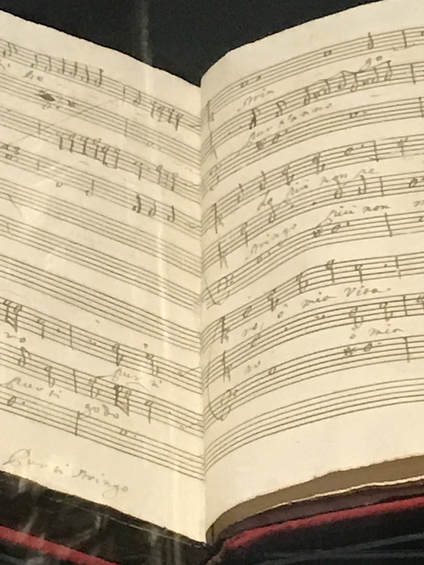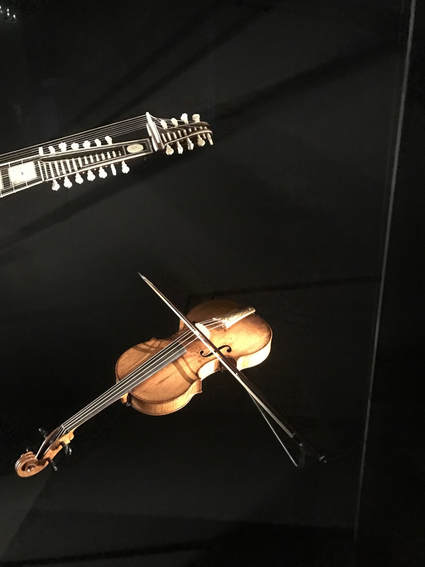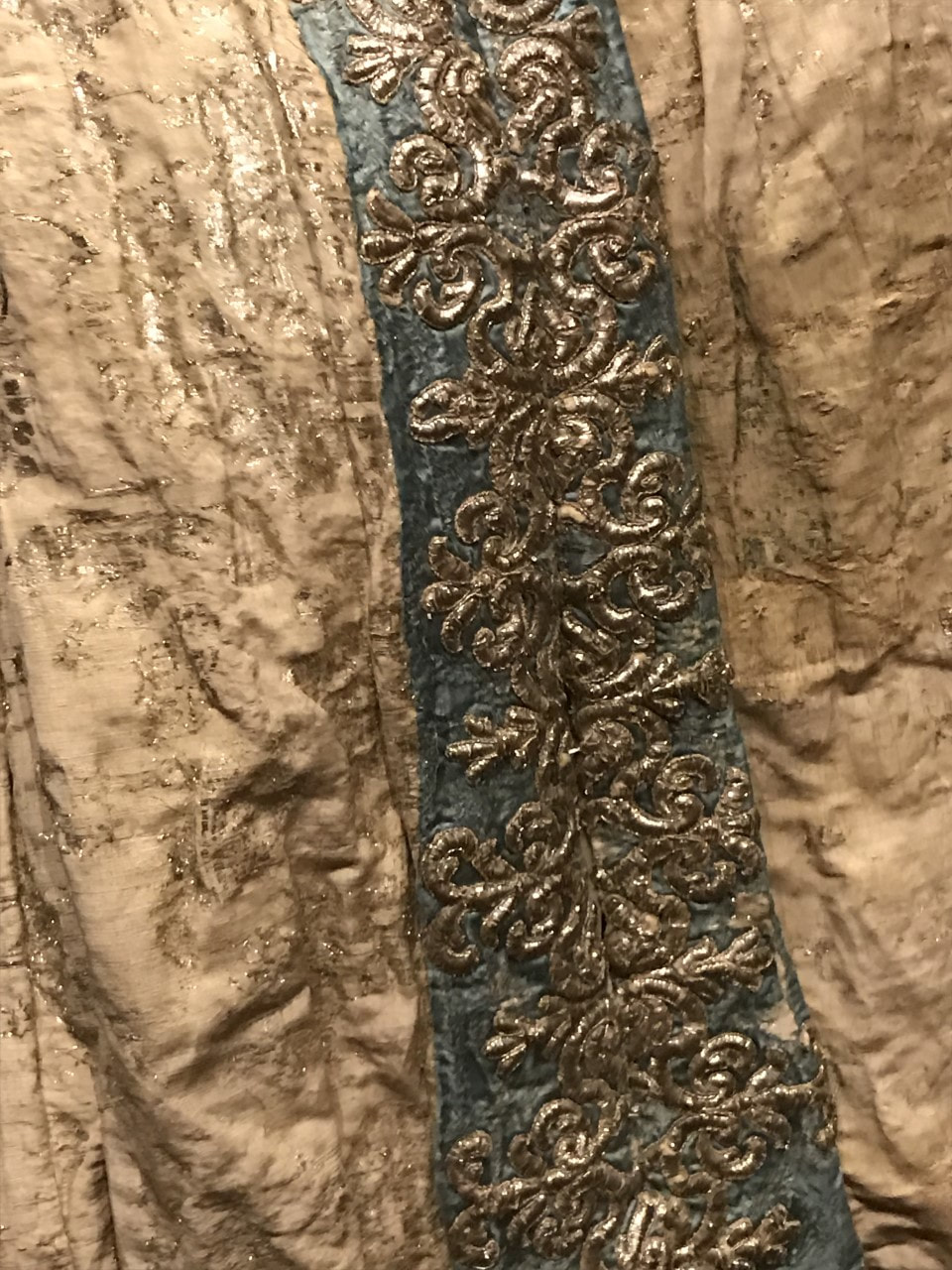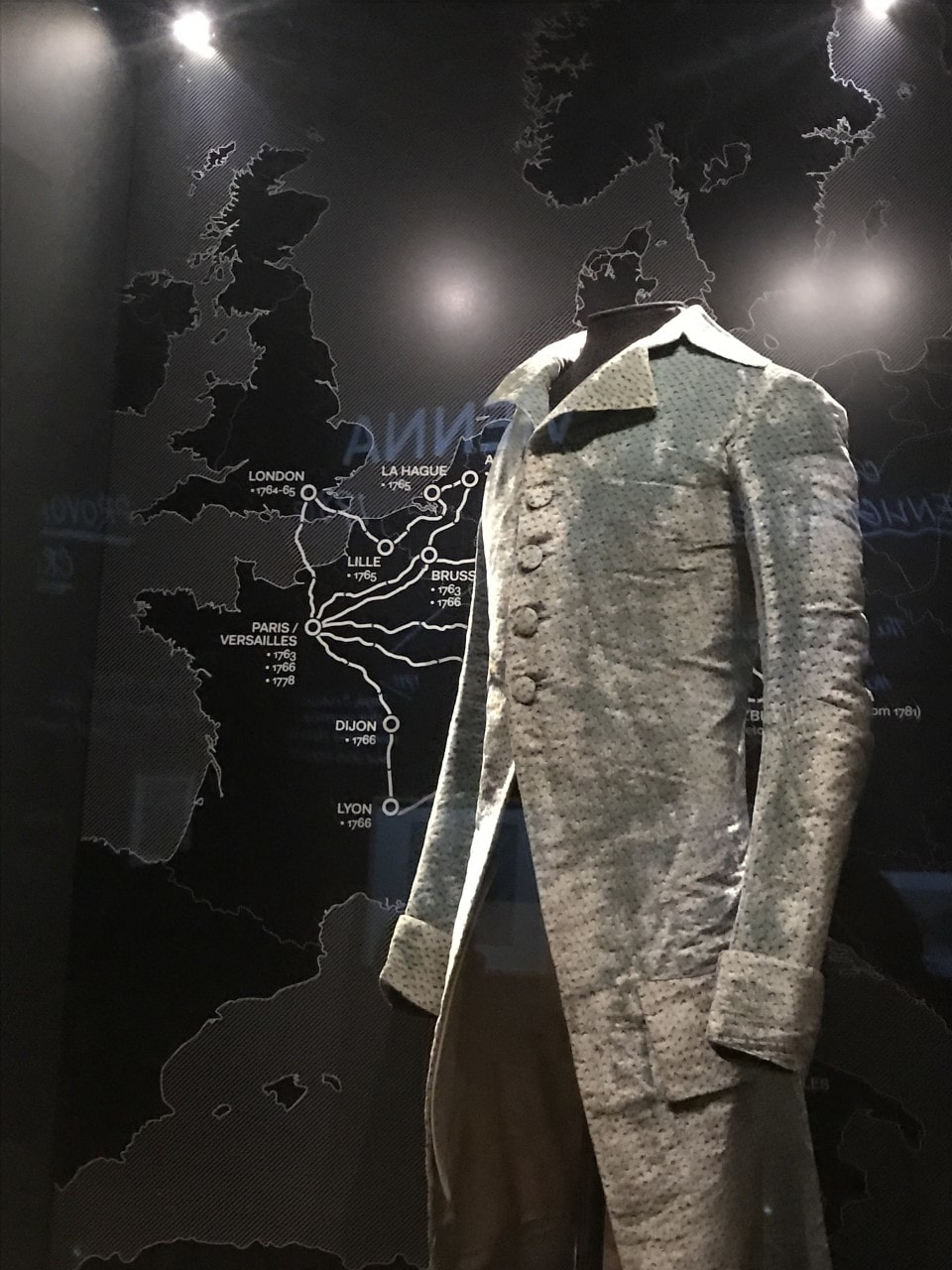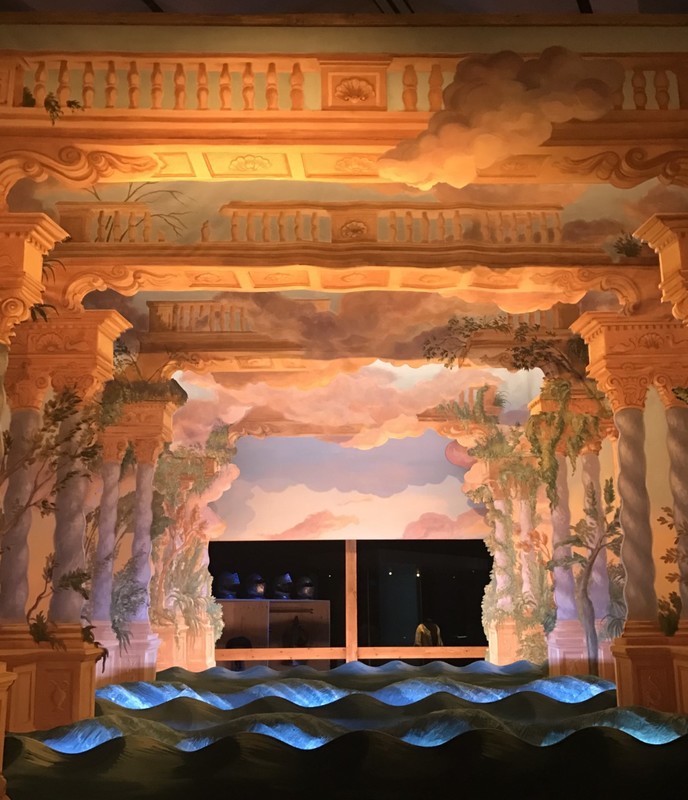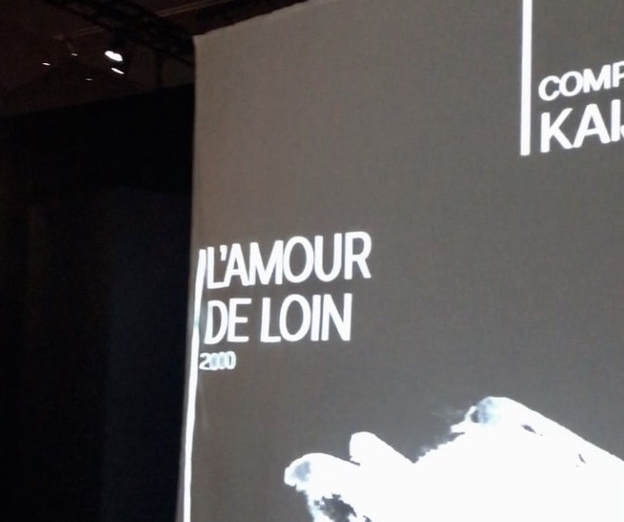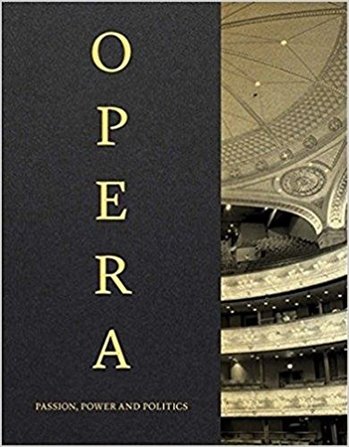Kate Bailey on
Opera, Passion, Power and Politics at the Victoria and Albert Museum,
Curating Exhibitions and the
Strength of the Arts to Transcend Borders
If ever there was a time where the arts were an important tool to show how they can bring people together, it may be now. A great example of how music crosses borders is the engaging and captivating exhibition "Opera, Passion, Power & Politics" at the V&A in London. The opera throughout the exhibition navigates us through 7 cities travelling alongside the costumes, the paintings, the arts, and the history. I sat down with Kate Bailey to discuss how influences and creativity can move from one city to the other through passion and politics...
How did the idea for the exhibition Opera, Passion, Power and Politics come about?
A meeting of many different forces, characters and institutions.
It was back in 2012, there was a new director at the V&A Martin Roth and a new director of Opera in Covent Garden, Kasper Holten, and they had this idea to bring together the Royal Opera House and the V&A, two institutions working in London, to try and work collaboratively on an exhibition about opera.
So I presented the concept of doing 7 premieres in 7 cities as a way of telling a story of opera, a story of Europe and responding to the V&A's collections; that was the genesis.
The other force that was happening, is as a curator in the Theatre and Performance Department here at the V&A, we were exploring ways of working with theatre practitioners and discovering how to bring theatre practice and the production techniques into exhibitions, so we started working with designers and directors from theatre. In 2012, we were developing exhibitions using sound technology but for rock and pop, and there was this general curiosity about what other subjects could we tackle.
A meeting of many different forces, characters and institutions.
It was back in 2012, there was a new director at the V&A Martin Roth and a new director of Opera in Covent Garden, Kasper Holten, and they had this idea to bring together the Royal Opera House and the V&A, two institutions working in London, to try and work collaboratively on an exhibition about opera.
So I presented the concept of doing 7 premieres in 7 cities as a way of telling a story of opera, a story of Europe and responding to the V&A's collections; that was the genesis.
The other force that was happening, is as a curator in the Theatre and Performance Department here at the V&A, we were exploring ways of working with theatre practitioners and discovering how to bring theatre practice and the production techniques into exhibitions, so we started working with designers and directors from theatre. In 2012, we were developing exhibitions using sound technology but for rock and pop, and there was this general curiosity about what other subjects could we tackle.
Throughout the exhibition, it feels like art and fashion was just as much at the forefront of the exhibition as the opera, the music and its history, they all merge with each other. As a curator where do you start with that, how do you manage to make each subject feed of each other?
In some ways, one of the first things is working out the story and the research. Through my initial research, I looked at why did operas happen at certain moments, what did they represent and what creative and cultural forces were coming together in a city at a particular time. I went through quite a meticulous way of answering the whys and the hows and looking at how each one intercepted with society. So there was quite a forensic analysis across all the different aspects of art to try and unpick the opera and make strong intersections. I considered the fashion of the time, the art of the time and the politics of the time, so they were all strands that then developed or inspired the narrative. But, firstly it really began with the music, so I think the music and the story, and then starting to think about the narrative as 4D worlds, as a series of installations.
In some ways, one of the first things is working out the story and the research. Through my initial research, I looked at why did operas happen at certain moments, what did they represent and what creative and cultural forces were coming together in a city at a particular time. I went through quite a meticulous way of answering the whys and the hows and looking at how each one intercepted with society. So there was quite a forensic analysis across all the different aspects of art to try and unpick the opera and make strong intersections. I considered the fashion of the time, the art of the time and the politics of the time, so they were all strands that then developed or inspired the narrative. But, firstly it really began with the music, so I think the music and the story, and then starting to think about the narrative as 4D worlds, as a series of installations.
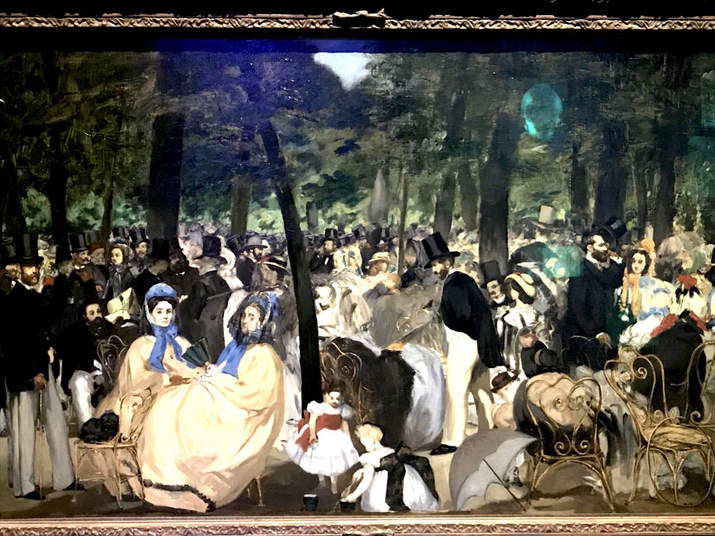
'Music in the Tuileries Gardens' by Edouard Manet, 1861-62
Walking around the exhibition, from one room to the other, we go from city to city and in a sense into a world without borders, was this in any way part of the message behind the exhibition, that music can really transcend borders, it travels and unites people and that influences flow in multiple directions
Yes absolutely, and it was in the very original design brief, in the concept that you share when you are choosing your design teams. Opera has always been an international art form, it’s a European art form to start off with, but it becomes international. It has always been about a movement of singers and composers, the first operas in Venice quite quickly travelled across Europe. So that sense of the fluidity was actually a very important part of the design, that you should just seamlessly move from the area of Vienna to that of Milan and then with it take in an understanding of the history behind it, such as that Milan at that point was still under Austrian rule and get a stronger message of Europeanness.
Yes absolutely, and it was in the very original design brief, in the concept that you share when you are choosing your design teams. Opera has always been an international art form, it’s a European art form to start off with, but it becomes international. It has always been about a movement of singers and composers, the first operas in Venice quite quickly travelled across Europe. So that sense of the fluidity was actually a very important part of the design, that you should just seamlessly move from the area of Vienna to that of Milan and then with it take in an understanding of the history behind it, such as that Milan at that point was still under Austrian rule and get a stronger message of Europeanness.
With the technology apparatus in our ears, the music moves with us and changes according to where we next go to and to our own steps, it feels like we are part of the narrative of the exhibition, deciding our route at one point we can choose between whether to go into the direction of St Petersburg or back into Paris
It’s great that you felt that, because the idea is that you should be inside the music and inside the stage set, and at the same time that you are owning your individual experience which is really important. How it works, is that there are infrared trigger points that connect to your device, and as you are moving through the gallery it knows where you are moving to and will then send a trigger to a different piece of music as you move, the music then crossfades into each other.
Sometimes there is music which is globally for an area, like in the London stage that is one set of music, but then as you approach a different part there’s the trigger point.
Reiterating the concept of without borders is that the whole environment was intended to feel like an opera city or world and that you can then take whichever route. You might be in the 21 century listening to an opera by a Finnish composer. Kaija Saariaho performed at the Met, but then you might go back and listen to Nabucco Production which is as powerful and as important today as it was in 1840.
It’s great that you felt that, because the idea is that you should be inside the music and inside the stage set, and at the same time that you are owning your individual experience which is really important. How it works, is that there are infrared trigger points that connect to your device, and as you are moving through the gallery it knows where you are moving to and will then send a trigger to a different piece of music as you move, the music then crossfades into each other.
Sometimes there is music which is globally for an area, like in the London stage that is one set of music, but then as you approach a different part there’s the trigger point.
Reiterating the concept of without borders is that the whole environment was intended to feel like an opera city or world and that you can then take whichever route. You might be in the 21 century listening to an opera by a Finnish composer. Kaija Saariaho performed at the Met, but then you might go back and listen to Nabucco Production which is as powerful and as important today as it was in 1840.
We navigate the exhibition through 7 cities, was it evident which cities you were going to choose, or were there some other European cities you would have liked to have included?
There were many different ways we could have told the story, but actually there were only a couple of questioning moments about the cities because it fell into place as we were looking at a very specific path.
It had to start in Venice, it couldn’t start anywhere else because we knew we wanted to tell a story of cities and not of the Courts, so we weren’t looking at opera in the Florentine Court for instance, it had to be where opera intercepted with the civic life.
It was great to look at moments where there was a tension and intersection. In order to make a powerful narrative you have to have a bit of friction, and so jumping to when opera became this very powerful and popular European artform in London, to that intersection where we have Mozart in Vienna and Verdi in Milan. Including Wagner in Paris was a more controversial choice. To do Paris at the end of the 19th century made total sense and what you have is the impression that it's a capital of all culture, it attracts the artists, the writers and the musicians. However, that choice was controversial because Wagner's opera was booed at the time, Tannhaüser which is very emblematic of Napoleon’s Second Empire and is staged as part of a powerful regime of the city. Wagner polarizes the audiences, because some people love it and some people hate it, but the artists love it, so for me, it was this fascinating intersection again with artists who embrace music and new forms quicker than quite a lot of society.
There were many different ways we could have told the story, but actually there were only a couple of questioning moments about the cities because it fell into place as we were looking at a very specific path.
It had to start in Venice, it couldn’t start anywhere else because we knew we wanted to tell a story of cities and not of the Courts, so we weren’t looking at opera in the Florentine Court for instance, it had to be where opera intercepted with the civic life.
It was great to look at moments where there was a tension and intersection. In order to make a powerful narrative you have to have a bit of friction, and so jumping to when opera became this very powerful and popular European artform in London, to that intersection where we have Mozart in Vienna and Verdi in Milan. Including Wagner in Paris was a more controversial choice. To do Paris at the end of the 19th century made total sense and what you have is the impression that it's a capital of all culture, it attracts the artists, the writers and the musicians. However, that choice was controversial because Wagner's opera was booed at the time, Tannhaüser which is very emblematic of Napoleon’s Second Empire and is staged as part of a powerful regime of the city. Wagner polarizes the audiences, because some people love it and some people hate it, but the artists love it, so for me, it was this fascinating intersection again with artists who embrace music and new forms quicker than quite a lot of society.
Standing in the middle of the projection area is an amazing sensation, it felt like being backstage, as well as in the audience and part of the opera, how did you envisage that part to come about in the exhibition?
The exhibition designers, the design team called Curious Space were keen to explore an idea which celebrated the backstage. Each of the individual cities and premieres is represented by a set, the idea that then you are at the back of a set was an exciting territory to create. It’s partly about giving people a window that they don’t normally get and partly about immersing people inside a stage set which they wouldn’t normally do. But particularly in that last section, we wanted to give a real sense of the now and the kind of energy of different productions happening in different places.
In some ways, it was also a practical solution because the centre of the room, World Passion, is also the back of the stage sets, ithat you have encountered on your journey. The back of the sets become projection areas. At the Royal Opera House in Covent Garden it is a wonderful thing to witness the backstage, the coming together of a live performance. We wanted to give that sense that you you are suddenly maybe in one set for the ballet and then in another set for Madame Butterfly or another for Otello. So you have that sense of the living and the creative art form.
The exhibition designers, the design team called Curious Space were keen to explore an idea which celebrated the backstage. Each of the individual cities and premieres is represented by a set, the idea that then you are at the back of a set was an exciting territory to create. It’s partly about giving people a window that they don’t normally get and partly about immersing people inside a stage set which they wouldn’t normally do. But particularly in that last section, we wanted to give a real sense of the now and the kind of energy of different productions happening in different places.
In some ways, it was also a practical solution because the centre of the room, World Passion, is also the back of the stage sets, ithat you have encountered on your journey. The back of the sets become projection areas. At the Royal Opera House in Covent Garden it is a wonderful thing to witness the backstage, the coming together of a live performance. We wanted to give that sense that you you are suddenly maybe in one set for the ballet and then in another set for Madame Butterfly or another for Otello. So you have that sense of the living and the creative art form.
The projection shows other cities and opera houses, like Sydney Opera House, it encompassed World Opera that is happening now
Yes so the first minute or two it takes you on whizz through about 100 different opera houses opening around the world, chronologically Following the European narrative to the beginning of the 20th century, we then show how opera travels across the globe, whether it is Buenos Aires, The Met, Oman, Uzbekistan or Cairo, it shows a very global art form. We then take you through 8 different premieres, some of which happen in Europe and some of which are global narratives. Some are fast moving operas that have premiered and have a capacity to tour the globe in an instant. We were really looking at what those stories were, where they happened and where opera continues to deal with and tell stories that societies need to hear.
Yes so the first minute or two it takes you on whizz through about 100 different opera houses opening around the world, chronologically Following the European narrative to the beginning of the 20th century, we then show how opera travels across the globe, whether it is Buenos Aires, The Met, Oman, Uzbekistan or Cairo, it shows a very global art form. We then take you through 8 different premieres, some of which happen in Europe and some of which are global narratives. Some are fast moving operas that have premiered and have a capacity to tour the globe in an instant. We were really looking at what those stories were, where they happened and where opera continues to deal with and tell stories that societies need to hear.
Opera Passion, Power and Politics is the first exhibition to take place in the V&A’s Sainsbury’s Wing, that must have come with some pressure, did you feel that as you were working or did you not think about that aspect?
I was completely aware of it, I think it is good to have fear and pressure. Doing anything at the V&A you always have that sense of one foot in the past and one foot in the future, and making sure that what you do is embracing and endorsing this extraordinary museum’s history and its legacy but also leaping forward in some ways.
The first exhibition in this new gallery obviously was going to be looked at in a very particular way, because we had 4 empty walls and a huge space to fill. Actually opera as a subject was perfect, and theatre design a great approach. We worked hard to find adesign that would be respectful of the architecture and the space as well as doing what we wanted to do in terms of narrative and exhibition content. A kind of a liberating space to work in and simultaneously quite awesome and terrifying experience!
I was completely aware of it, I think it is good to have fear and pressure. Doing anything at the V&A you always have that sense of one foot in the past and one foot in the future, and making sure that what you do is embracing and endorsing this extraordinary museum’s history and its legacy but also leaping forward in some ways.
The first exhibition in this new gallery obviously was going to be looked at in a very particular way, because we had 4 empty walls and a huge space to fill. Actually opera as a subject was perfect, and theatre design a great approach. We worked hard to find adesign that would be respectful of the architecture and the space as well as doing what we wanted to do in terms of narrative and exhibition content. A kind of a liberating space to work in and simultaneously quite awesome and terrifying experience!
And filling those walls with all the art that was put together, as well as the graphics, the writing on the walls such as in big Obsessions with Salomé, created depth
I think yes there are quite a lot of layers, the story and the messages and the key message for each area, we thought about what we want people to take away from that and then how we were going to deliver that.
You mentioned the text, we decided with the graphic and theatre designers that we wanted to use the outer walls as a level of communication, so they are intended to feel like a director or a designer’s notebooks notes, created with energy and ideas. There are many layers so we needed to have a sort of rhythm and a structure.
So there’s the story, then each of the cities have a sort of series of messages which really fall into three sections, the context of a city, what the story of the opera is and then how that intersected with society. Once we had that structure, it then became easier to choose the exhibits. I think the most exciting group of exhibits is where it relates to the moment of intersections, like Salomé for example, it was like suddenly realizing that this was a moment where you arrive at the beginning of the 20th century, with women’s emancipation and Freud’s hysteria. And discover how this opera really responds to the zeitgeist and then the selection of exhibits that extend beyond that moment, so there’s the notion of 'Salomania'.
I think the triptych nature for each of the cities, which doesn’t necessarily come out if you are walking through unless you are looking for it, is a really good starting point in terms of breaking down such a big story.
I think yes there are quite a lot of layers, the story and the messages and the key message for each area, we thought about what we want people to take away from that and then how we were going to deliver that.
You mentioned the text, we decided with the graphic and theatre designers that we wanted to use the outer walls as a level of communication, so they are intended to feel like a director or a designer’s notebooks notes, created with energy and ideas. There are many layers so we needed to have a sort of rhythm and a structure.
So there’s the story, then each of the cities have a sort of series of messages which really fall into three sections, the context of a city, what the story of the opera is and then how that intersected with society. Once we had that structure, it then became easier to choose the exhibits. I think the most exciting group of exhibits is where it relates to the moment of intersections, like Salomé for example, it was like suddenly realizing that this was a moment where you arrive at the beginning of the 20th century, with women’s emancipation and Freud’s hysteria. And discover how this opera really responds to the zeitgeist and then the selection of exhibits that extend beyond that moment, so there’s the notion of 'Salomania'.
I think the triptych nature for each of the cities, which doesn’t necessarily come out if you are walking through unless you are looking for it, is a really good starting point in terms of breaking down such a big story.
There are many perspectives in the exhibition, the political aspect or the historical aspect, as you mentioned, women’s emancipation, and like you said, it opens it up to many who may not necessarily be attracted to opera. Opera itself, can be perceived as quite elitist, tickets are expensive - not everyone can afford to go to an Opera House, this exhibition makes opera approachable and is also on parallel to many free events around the V&A and programs on the BBC, was that critical for you to have that?
Oh yes, all the way through we thought, how do we make this exhibition work for people who are opera buffs and give them something surprising that they wouldn't have seen, whether that’s the Shostakovich score or a design from London in 1711, so that there is the notion of finding things out and ways of telling the story that would be interesting to a specialist audience, but at the same time consider how the exhibition can work for those that are not opera specialists.
The idea of cities and the intersection with other art forms was definitely a way we thought could help bring in new audiences and that was a driving force really, because actually I think opera doesn’t have to be intimidating. It’s massive but if you break anything down and deconstruct it, it gives you a way in, so you don’t have to love all of Monteverdi or all of Wagner, in fact you can just decide that you love Strauss. The exhibition allows you not to be overwhelmed by opera and can provide an introduction to opera; it gives you a way in.
Oh yes, all the way through we thought, how do we make this exhibition work for people who are opera buffs and give them something surprising that they wouldn't have seen, whether that’s the Shostakovich score or a design from London in 1711, so that there is the notion of finding things out and ways of telling the story that would be interesting to a specialist audience, but at the same time consider how the exhibition can work for those that are not opera specialists.
The idea of cities and the intersection with other art forms was definitely a way we thought could help bring in new audiences and that was a driving force really, because actually I think opera doesn’t have to be intimidating. It’s massive but if you break anything down and deconstruct it, it gives you a way in, so you don’t have to love all of Monteverdi or all of Wagner, in fact you can just decide that you love Strauss. The exhibition allows you not to be overwhelmed by opera and can provide an introduction to opera; it gives you a way in.


